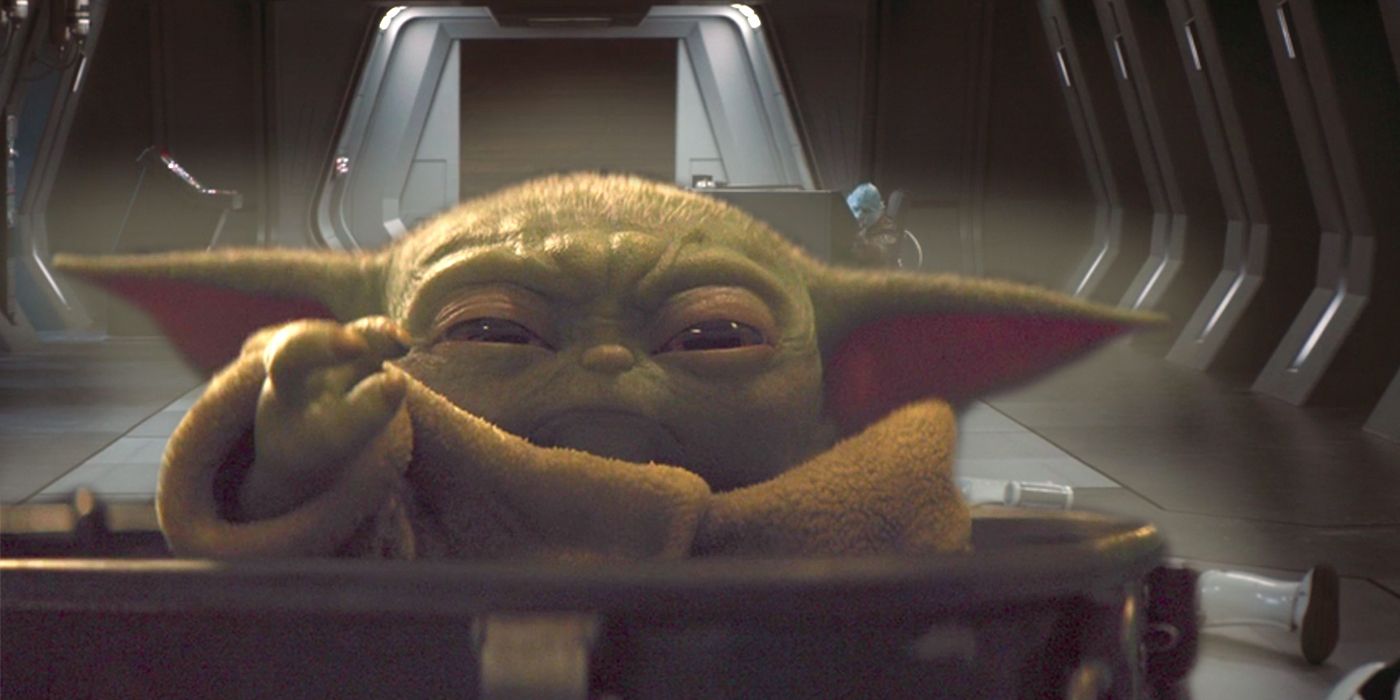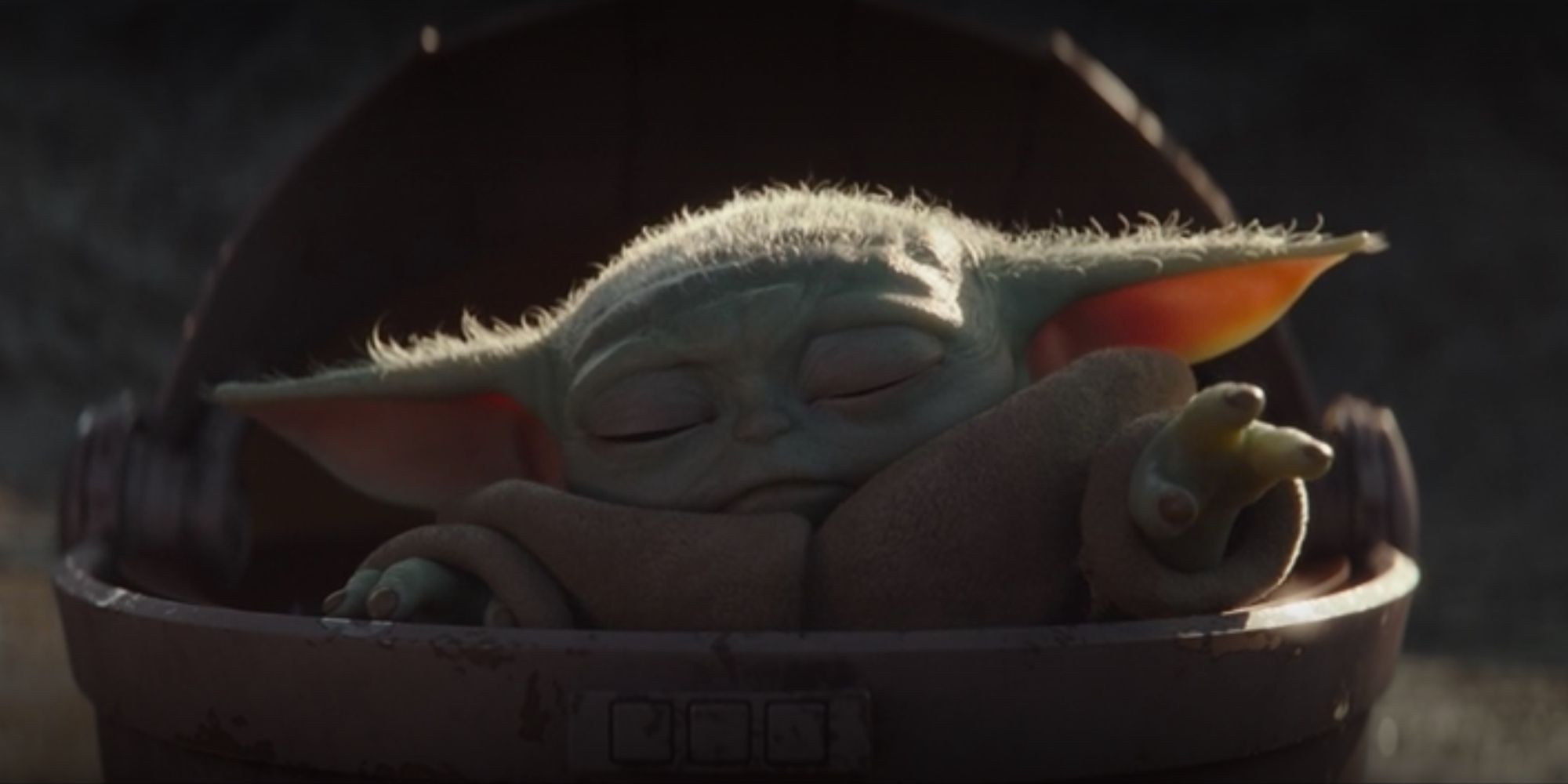Warning! This article contains SPOILERS for The Mandalorian season 2, episode 4.
The Mandalorian season 2 is slowly revealing more about Baby Yoda, most recently confirming how powerful he is in the Force. The Child, as the little guy is officially known, is easily the biggest mystery of the Disney+ show. Everything from where he came from to what species he is remains unknown. In fact, The Mandalorian has largely focused on revealing more about Baby Yoda's diet than anything else.
In addition to his voracious appetite, it's known Baby Yoda is a child of the same species as Jedi Master Yoda (hence audiences' preferred nickname for the character). Though very much a young member of his species, Baby Yoda is actually 50 years old. The Child is only the third member of this species to ever appear in Star Wars media, joining Yoda and another member of the Jedi Council, Yaddle, seen in Star Wars: Episode I - The Phantom Menace. Like the other known members of his species, Baby Yoda is Force-sensitive and, according to The Mandalorian season 2, episode 4, incredibly powerful.
In The Mandalorian season 2, "Chapter 14: The Siege," a hologram message from Dr. Pershing to Moff Gideon is discovered. In it, Pershing discusses their plans for the Child, revealing that these Imperial remnants are injecting Baby Yoda's blood into host bodies. Their goal appears to be artificially creating Force-sensitivity, but they haven't yet been successful. Dr. Pershing now needs more blood from the Child to continue his experiments, confirming his importance by saying: "I highly doubt we'll find a donor with a higher M-count." This is sure to mean Baby Yoda's blood contains an incredibly high number of midi-chlorians, and that makes him a very powerful Force-user.
Midi-chlorians were first introduced in The Phantom Menace, explained by Qui-Gon Jinn as being microscopic creatures within the cells of all living beings that, if in a large enough quantity, allow a life form to communicate with the Force. Generally, this is understood to mean the more midi-chlorians a being has, the more powerful they are in the Force. Anakin Skywalker, for example, has more midi-chlorians than any other Jedi on record, even surpassing the M-count of Yoda, who himself is said to have a large number of midi-chlorians. In the case of the Child, him having a "higher M-count" than any other available donor also suggests a very large number of midi-chlorians in his blood, likely making him an especially gifted Force-user.
Baby Yoda having a high M-count is certainly backed up by the many Force-abilities he's already demonstrated on The Mandalorian, and at such an early age. It would make sense for his species to naturally have a high M-count, too, seeing as the only other known members of the species were both powerful Jedi with seats on the council. This would also make him a prime candidate for Dr. Pershing's experiment as even a small amount of his blood is likely to yield a high concentration of midi-chlorians. Then again, Baby Yoda is among the few known Force-users still alive during The Mandalorian, and that could mean the number of midi-chlorians he has is only remarkable because of how rare Force-sensitives have become.
Without being able to compare Baby Yoda's M-count to other Force-users, it's impossible to say exactly how powerful he is. But as The Mandalorian has shown him to be very capable of using the Force, and with what appears to be little to no training, it's safe to say the Child is a naturally gifted Force-user. Couple that with an M-count that makes him a desperately sought after asset, and it's clear Baby Yoda is very strong in the Force.


